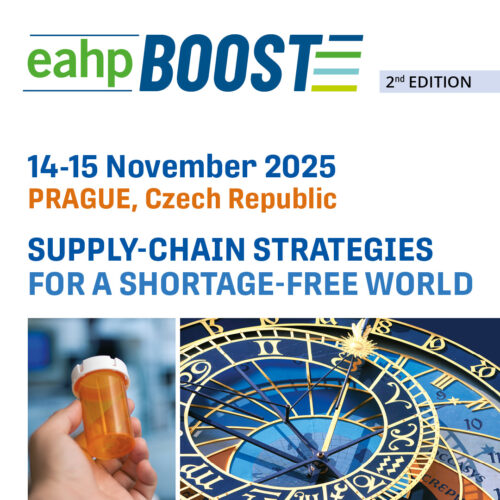ACPE UAN: 0475-0000-19-015-L07-P. A application based activity.
Linked to EAHP Statements:
Section 1 – Introductory Statements and Governance: Statements 1.2, 1.3
Section 2 – Selection, Procurement and Distribution: Statements 2.1, 2.4, 2.7
Section 3 – Production and Compounding: Statements 3.1, 3.2, 3.3, 3.4, 3.5, 3.6
Section 4 – Clinical Pharmacy Services: Statement 4.2
Section 5 – Patient Safety and Quality Assurance: Statements 5.10, 5.11
Abstract
Since centuries pharmacists are the sole providers of drugs. It all started with the fine art of compounding and pharmacognosy. Nowadays most common therapies are commercially available from pharmaceutical companies. Nevertheless, some patients need custom made medication (e.g. paediatrics, rare disease patients, specific routes of administration) and there’s a continuing evolution towards the dispensing of ready-to-administer medication from the hospital pharmacy.
To ensure that the scarce resources are used in the most effective way and to guarantee optimal therapy and safety to the patient, the hospital pharmacist must evaluate each new request for compounding for appropriateness (is the prescribed therapy right for the patient?). When the therapy is appropriate it can be compounded in the hospital pharmacy or outsourced to a compounding company or bought if commercially available. To decide on this the hospital pharmacist must do a “make-or-buy” analysis.
A make-or-buy analysis takes into account all (hidden) costs of compounding such as raw materials, labour time, cost of equipment and building, administration, warehouse costs, costs of analysis, opportunity cost. As the analysis has many pitfalls it is necessary to know about different techniques, tips and tricks.
In this workshop several pitfalls and techniques will be presented and applied interactively in a real case.
Learning objectives
After the workshop, participants should be able to:
• be critical about new requested compoundings;
• understand all (hidden) costs of compounding;
• be aware of potential alternatives on the (international) market;
• perform a simple make-or-buy analysis.
Educational need addressed
Hospital pharmacists have to understand the hidden costs of compounding and must have the skills to perform a make-or-buy analysis in order to decide on how to provide the requested therapy.
Keywords | Compounding, outsourcing, make-or-buy, costs, appropriateness.
Handouts : Thomas Storme & David Devolder
























